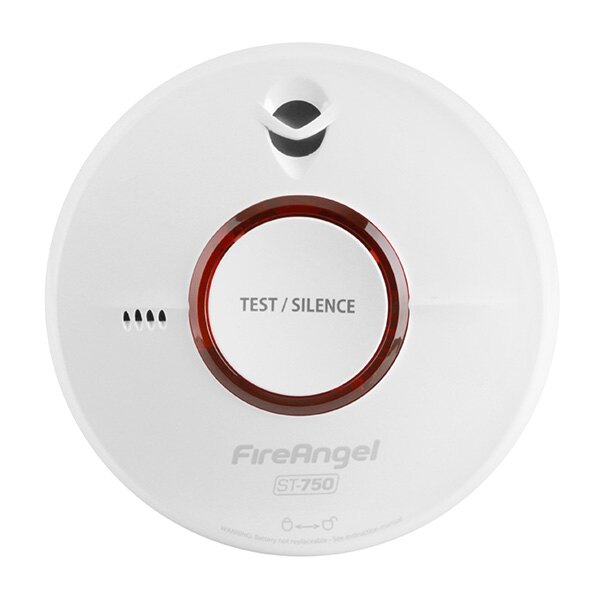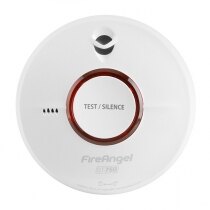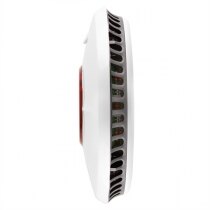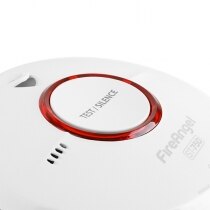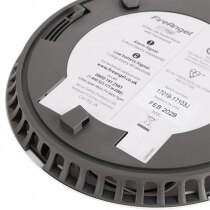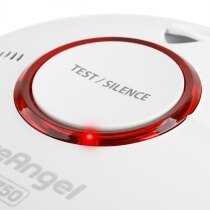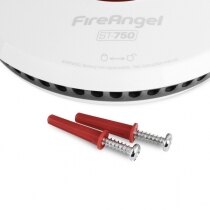-
Contact
Sales & Customer Service
0800 612 6537 support@safelincs.co.uk Live ChatDelivery Enquiries
0800 077 6149 - Resources
Fire & Safety Solutions
CALL OUR TEAM NOW 0800 612 6537
Lines open today 8am - 6pm
FREE Delivery
on this product
Live Chat - Online
Instant help & Advice
Trade Discounts
and exclusive pricing
0% Credit Available
Open an account now
5 Star Customer Feedback
10 Year Thermally Enhanced Optical Smoke Alarm (Thermoptek) - FireAngel ST-750T
Discontinued Product
This product has been discontinued.
Product Overview
Technical Data
FAQs (2)

The ST-750T features FireAngel's groundbreaking Thermoptek technology. When the alarm detects a rise in temperature the optical smoke detection sensor becomes extra sensitive, making it able to detect fires much faster than standard optical alarms, while at the same time reducing the risk of false alarms. Powered by a sealed Panasonic lithium battery, the ultimate in battery life reliability, there is no need to change the alarm's battery for its entire 10 year lifespan.
The alarm also has a very helpful "Sleep Easy" function which allows homeowners to silence the end-of-life chirp after ten years for 8 hours to avoid being disturbed while asleep.
FireAngel's Thermoptek smoke alarms are recommended by the UK's Fire and Rescue Service.
- Battery: Built-in, lasts the lifetime of your alarm - GUARANTEED
- Warranty: 10 year warranty
- Large test / silence button for no-hassle maintenance
- Alarm Smart Silence feature helps provide maximum protection
- Thermally enhanced sensor for quicker reactions to fire (compared to standard optical smoke alarms)
- Reduced risk of false alarms and therefore suitable for areas adjacent to a kitchen
- Sleep Easy™ function temporarily silences end-of-life warning chirps for 8 hours
- Suitable for installations complying to BS 5839-6: 2019 Grade F1
- Smoke alarm technology of choice for the UK's Fire and Rescue Service
- Supplied with fixings; 2 x screws and 2 x rawl plugs
- CE marked and Kitemarked to BS EN 14604
- Please note: While the alarm features a red ring on the front, only a very small LED flashes red every 40 seconds to indicate that the alarm is working correctly.
| Product Code | FAST750T |
|---|---|
| Alternative Product Codes | ST-750R, ST-750Q, ST-750T |
| Brand | FireAngel |
| Battery Type | Sealed Panasonic lithium battery |
| Dimensions (HxDia) | 34x130mm |
| Operating Temperature | +4°C to +38°C |
| Relative Humidity | Up to 90% |
| Sound Output | 85dB |
| Warranty | 10 Years |
| Weight | 0.25kg |
| Product Datasheets |
Q. Can a smoke alarm be fitted with a sticky adhesive pad in a let property?
A.
The sticky pad is suitable for all battery operated smoke alarms. However, we cannot judge if battery alarms are suitable for your let property, as let properties usually require mains powered alarms. There is some advice to this in the governments guides to fire risk assessments. http://www.safelincs.co.uk/Fire-Risk-Assessment/ Also see the LACoRS guide for let properties.
Q. What sort of smoke alarm system would I need to install for a HMO?
A.
BS 5839-6 recommends that one or two storey HMOs with an individual floor area of no more than 200sqm (not the total of both floors) should have a Grade D smoke alarm system installed. Grade D refers to mains powered smoke alarms with a back up battery power supply. The alarms can be interlinked either by wire or by radio signal and the system does not require a separate fire alarm panel. For HMOs of 3 storey or higher, a Grade A panel system would need to be installed. This can cover the whole of the building, or can be used just for the communal areas with a separate Grade D system installed for the individual dwellings. For both applications, the level of cover should be a minimum of LD3 (in all escape routes) but this may change according to the fire risk assessment.
Key Product Features
What's Included?
Every FireAngel FAST750T is supplied with the following components.
- 1 x FireAngel ST-750T Thermoptek alarm
- 1 x Tamper-proof 10 year lithium battery
- 2 x Screws and rawl plugs
- 1 x Instruction manual

Approved Partner
Customer Reviews
49 customers have given this product an overall rating of 4.7 out of 5
Reviews by real customers
All of our product reviews are written by real customers that have purchased this product from us and are published without modification.Rating: 5 / 5 Stars
Reviewed by:
Looks good and easy to install
Published on: 4th December 2019
Rating: 5 / 5 Stars
Reviewed by:
Does the job intended!
Published on: 30th May 2019
Rating: 4 / 5 Stars
Reviewed by:
Nice and neat looking, presume they'll do the job if required.
Published on: 17th May 2019
Looking for more information?
If you have any questions or would like more information about this product you can ask one of our specialists.
Live Chat Available Now
Direct Telephone
01507 464181




















